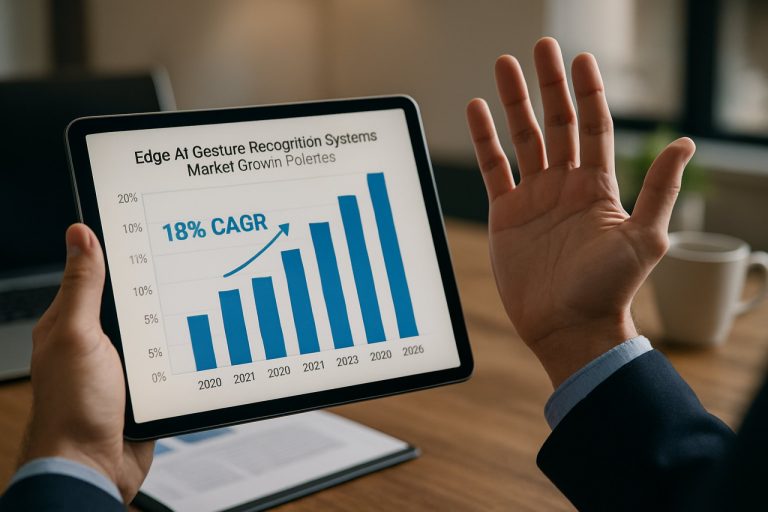
Algorithmic Market Making in Decentralized Liquidity Pools 2025: In-Depth Analysis, Growth Projections, and Strategic Insights for the Next 5 Years
- Executive Summary & Key Findings
- Market Overview: Size, Structure, and Recent Developments
- Technology Trends Shaping Algorithmic Market Making in DeFi
- Competitive Landscape: Leading Players and Emerging Innovators
- Growth Forecasts 2025–2030: Market Size, CAGR, and Adoption Rates
- Regional Analysis: North America, Europe, Asia-Pacific, and Emerging Markets
- Challenges and Opportunities: Regulatory, Technical, and Market Dynamics
- Future Outlook: Strategic Recommendations and Scenario Planning
- Sources & References
Executive Summary & Key Findings
Algorithmic market making (AMM) in decentralized liquidity pools has rapidly evolved as a cornerstone of decentralized finance (DeFi), fundamentally transforming how digital assets are traded and liquidity is provisioned. In 2025, the sector continues to experience robust growth, driven by innovations in automated trading strategies, increased institutional participation, and the maturation of on-chain financial infrastructure. AMMs, which use smart contracts to facilitate trades and set prices algorithmically, have become the dominant model for decentralized exchanges (DEXs), enabling permissionless and continuous liquidity without traditional order books.
Key findings for 2025 highlight several pivotal trends:
- Market Expansion: The total value locked (TVL) in decentralized liquidity pools surpassed $120 billion in Q1 2025, reflecting a 35% year-over-year increase, according to DeFiLlama. This growth is attributed to both the proliferation of new AMM protocols and the integration of advanced algorithmic strategies that optimize capital efficiency.
- Algorithmic Innovation: Next-generation AMMs, such as concentrated liquidity models and dynamic fee structures, have significantly improved capital utilization and reduced slippage. Protocols like Uniswap v4 and Curve Finance have led the way in deploying these innovations, attracting both retail and institutional liquidity providers.
- Institutional Adoption: Major financial institutions and trading firms are increasingly participating in decentralized liquidity provision, leveraging algorithmic strategies for yield generation and market making. This trend is evidenced by the entry of firms such as Jump Crypto and Wintermute into on-chain market making.
- Risk Management Advances: Enhanced risk management tools, including on-chain analytics and real-time monitoring, have reduced the impact of impermanent loss and smart contract vulnerabilities. Platforms like Gauntlet provide simulation and optimization services to help protocols and liquidity providers manage risk more effectively.
- Regulatory Developments: Jurisdictions such as the European Union and Singapore have introduced clearer guidelines for DeFi protocols, fostering greater confidence among institutional participants and accelerating mainstream adoption, as reported by Bank for International Settlements.
In summary, algorithmic market making in decentralized liquidity pools is entering a phase of accelerated innovation and institutionalization in 2025, underpinned by technological advancements, regulatory clarity, and growing market depth. These dynamics are expected to further solidify AMMs as a foundational component of the global digital asset ecosystem.
Market Overview: Size, Structure, and Recent Developments
Algorithmic market making (AMM) in decentralized liquidity pools has rapidly evolved into a cornerstone of the decentralized finance (DeFi) ecosystem. AMMs are smart contract-based protocols that enable automated trading of digital assets without the need for traditional order books or centralized intermediaries. Instead, they rely on liquidity pools—collections of tokens supplied by users—to facilitate trades, with prices determined by mathematical formulas. This innovation has democratized market making, allowing anyone to provide liquidity and earn fees, and has significantly increased the efficiency and accessibility of digital asset trading.
As of early 2025, the global DeFi market, with AMM protocols at its core, has surpassed $100 billion in total value locked (TVL), according to DeFiLlama. Leading AMM platforms such as Uniswap, Curve Finance, and Balancer collectively account for over 60% of this TVL, reflecting their dominance and the maturity of the sector. The market structure is characterized by a handful of major protocols, each specializing in different asset types and trading strategies—Uniswap for general-purpose swaps, Curve for stablecoins, and Balancer for customizable pools.
Recent developments in 2024 and early 2025 have focused on enhancing capital efficiency and reducing impermanent loss, a key risk for liquidity providers. The introduction of concentrated liquidity, pioneered by Uniswap v3, allows liquidity providers to allocate capital within specific price ranges, resulting in higher fee earnings and more efficient use of funds. This model has been widely adopted and further refined by competitors, including PancakeSwap and SushiSwap. Additionally, the integration of on-chain oracles and dynamic fee structures has improved price accuracy and incentivized liquidity provision during volatile market conditions.
- Expansion to Layer 2 solutions and alternative blockchains (e.g., Arbitrum, Polygon) has reduced transaction costs and increased throughput, attracting new users and liquidity.
- Hybrid AMM models, combining order book and pool-based mechanisms, are emerging to address the limitations of pure AMMs, as seen with dYdX and KyberSwap.
- Regulatory scrutiny is intensifying, with global authorities examining the implications of decentralized market making for investor protection and systemic risk (Bank for International Settlements).
Overall, the algorithmic market making landscape in decentralized liquidity pools is marked by rapid innovation, growing institutional interest, and a shift toward more sophisticated, capital-efficient mechanisms. The sector’s trajectory in 2025 will likely be shaped by further technological advancements, cross-chain interoperability, and evolving regulatory frameworks.
Technology Trends Shaping Algorithmic Market Making in DeFi
Algorithmic market making (AMM) in decentralized liquidity pools has become a cornerstone of the decentralized finance (DeFi) ecosystem, fundamentally transforming how digital assets are traded on blockchain networks. Unlike traditional order book models, AMMs utilize smart contracts to automate the process of providing liquidity and setting asset prices, enabling permissionless and continuous trading. In 2025, several technology trends are shaping the evolution and efficiency of algorithmic market making in DeFi.
One of the most significant advancements is the proliferation of concentrated liquidity mechanisms, pioneered by protocols such as Uniswap v3. This approach allows liquidity providers to allocate capital within specific price ranges, increasing capital efficiency and reducing slippage for traders. As a result, liquidity is more effectively utilized, and providers can achieve higher returns on their assets. This innovation has spurred other protocols, including Balancer and Curve Finance, to adopt similar or hybrid models, further enhancing the competitiveness of DeFi liquidity pools.
Another trend is the integration of dynamic fee structures, which adjust transaction fees in real time based on market volatility and pool utilization. This technology, implemented by platforms like Balancer, helps optimize returns for liquidity providers while maintaining attractive trading conditions for users. Dynamic fees also mitigate the impact of impermanent loss, a persistent challenge in AMM design, by compensating providers during periods of heightened volatility.
Cross-chain interoperability is also gaining traction, with protocols such as THORChain enabling algorithmic market making across multiple blockchains. This development expands the addressable market for DeFi liquidity pools and allows for more diverse asset exposure, fostering greater liquidity and efficiency in the ecosystem.
Finally, the adoption of advanced oracles and on-chain analytics is improving the resilience and adaptability of AMMs. By leveraging real-time data feeds from providers like Chainlink, DeFi protocols can dynamically adjust parameters such as weights, fees, and rebalancing intervals, responding more effectively to market conditions and external shocks.
Together, these technology trends are driving the next generation of algorithmic market making in decentralized liquidity pools, enhancing capital efficiency, reducing risk, and broadening the scope of DeFi trading in 2025.
Competitive Landscape: Leading Players and Emerging Innovators
The competitive landscape for algorithmic market making (AMM) in decentralized liquidity pools is rapidly evolving, driven by both established DeFi protocols and a wave of innovative startups. As of 2025, the sector is characterized by a mix of dominant players leveraging proven AMM models and emerging innovators introducing novel mechanisms to address capital efficiency, impermanent loss, and cross-chain interoperability.
Among the leading players, Uniswap continues to set the benchmark with its v3 protocol, which introduced concentrated liquidity and customizable fee tiers, allowing liquidity providers (LPs) to optimize capital deployment. Curve Finance remains the go-to platform for stablecoin swaps, utilizing a specialized AMM algorithm that minimizes slippage for assets with similar prices. Balancer distinguishes itself with multi-asset pools and dynamic weighting, enabling more flexible portfolio management for LPs. These protocols collectively command a significant share of total value locked (TVL) in DeFi, with Uniswap and Curve consistently ranking among the top five by TVL according to DefiLlama.
Emerging innovators are challenging incumbents by addressing key pain points. Bancor has pioneered single-sided liquidity provision and built-in impermanent loss protection, attracting risk-averse LPs. DODO employs a proactive market maker (PMM) algorithm, which dynamically adjusts pricing curves based on market conditions, aiming for higher capital efficiency than traditional constant product models. PancakeSwap has leveraged its position on the BNB Chain to capture significant retail liquidity, while also experimenting with hybrid AMM models.
The competitive edge in 2025 is increasingly defined by the integration of advanced algorithms, cross-chain capabilities, and user-centric features. Protocols like THORChain and Osmosis are pushing the boundaries of cross-chain liquidity, enabling seamless swaps across disparate blockchains without centralized intermediaries. Meanwhile, the rise of intent-based and order flow auction models, as seen in projects like CoW Protocol, signals a shift toward more sophisticated, MEV-resistant market making strategies.
Overall, the algorithmic market making landscape in decentralized liquidity pools is marked by intense competition, rapid innovation, and a growing focus on capital efficiency and risk mitigation. As protocols continue to iterate and differentiate, the sector is poised for further disruption and expansion in 2025.
Growth Forecasts 2025–2030: Market Size, CAGR, and Adoption Rates
The period from 2025 to 2030 is expected to witness robust growth in algorithmic market making (AMM) within decentralized liquidity pools, driven by the maturation of decentralized finance (DeFi) infrastructure, increased institutional participation, and ongoing innovation in automated trading strategies. According to projections by Grand View Research, the global DeFi market is anticipated to expand at a compound annual growth rate (CAGR) exceeding 40% through 2030, with AMM protocols representing a significant share of this expansion.
Market size estimates for algorithmic market making in decentralized liquidity pools suggest a leap from approximately $15 billion in total value locked (TVL) in 2025 to over $60 billion by 2030, as reported by Consensys and Messari. This growth is underpinned by the proliferation of next-generation AMM protocols, such as Uniswap v4 and Curve v4, which are expected to attract both retail and institutional liquidity providers through improved capital efficiency and risk management features.
Adoption rates are forecasted to accelerate, with the number of unique liquidity providers participating in decentralized pools projected to grow at a CAGR of 35% between 2025 and 2030, according to Chainalysis. This surge is attributed to the increasing accessibility of user-friendly interfaces, the integration of advanced algorithmic strategies (including dynamic fee models and concentrated liquidity), and the expansion of cross-chain interoperability, which enables broader asset coverage and deeper liquidity.
- Institutional Adoption: By 2030, institutional players are expected to account for over 30% of all liquidity provision in decentralized pools, up from less than 10% in 2025, as per The Block.
- Protocol Innovation: The introduction of hybrid AMM models and on-chain order books is anticipated to further boost market share and trading volumes, with daily decentralized exchange (DEX) volumes projected to surpass $20 billion by 2030 (Dune Analytics).
- Geographic Expansion: Adoption is expected to broaden beyond North America and Europe, with significant growth in Asia-Pacific and Latin America, driven by regulatory clarity and local fintech partnerships (Bank for International Settlements).
Overall, the algorithmic market making segment in decentralized liquidity pools is poised for exponential growth, with market dynamics shaped by technological advancements, regulatory developments, and the evolving needs of both retail and institutional participants.
Regional Analysis: North America, Europe, Asia-Pacific, and Emerging Markets
The regional landscape for algorithmic market making in decentralized liquidity pools is evolving rapidly, with distinct trends and adoption patterns across North America, Europe, Asia-Pacific, and emerging markets. These differences are shaped by regulatory environments, technological infrastructure, and the maturity of decentralized finance (DeFi) ecosystems.
- North America: The United States and Canada remain at the forefront of DeFi innovation, with a high concentration of developers and institutional interest. North American platforms such as Uniswap and Coinbase have pioneered algorithmic market making models, leveraging advanced automated market maker (AMM) algorithms. Regulatory scrutiny, particularly from the U.S. Securities and Exchange Commission, has led to a focus on compliance and transparency, influencing the design of algorithmic strategies and liquidity pool governance. Despite regulatory headwinds, North America continues to attract significant venture capital and institutional liquidity, driving robust growth in algorithmic market making volumes.
- Europe: European markets are characterized by a proactive regulatory approach, with the European Securities and Markets Authority (ESMA) and the European Central Bank providing clearer frameworks for DeFi activities. This has fostered a climate of innovation, particularly in countries like Switzerland and Germany, where algorithmic market making protocols are being integrated with traditional financial infrastructure. European DeFi platforms are increasingly focused on cross-chain interoperability and sustainable liquidity incentives, responding to both regulatory requirements and user demand for transparency.
- Asia-Pacific: The Asia-Pacific region, led by Singapore, South Korea, and Hong Kong, is experiencing rapid adoption of decentralized liquidity pools. Regulatory sandboxes and government-backed blockchain initiatives have enabled local platforms such as PancakeSwap to experiment with novel AMM algorithms and dynamic fee structures. The region’s high retail participation and mobile-first user base have accelerated the deployment of algorithmic market making solutions, with a particular emphasis on scalability and low transaction costs.
- Emerging Markets: In Latin America, Africa, and parts of Southeast Asia, decentralized liquidity pools are gaining traction as alternatives to traditional financial systems. Algorithmic market making is being leveraged to provide liquidity for local tokens and stablecoins, addressing issues of currency volatility and limited banking access. Projects supported by organizations like the World Bank are exploring DeFi as a tool for financial inclusion, though challenges remain in terms of infrastructure and regulatory clarity.
Across all regions, the competitive landscape in 2025 is defined by the interplay between regulatory adaptation, technological innovation, and the evolving needs of both institutional and retail participants. Regional disparities in adoption and market structure are expected to persist, but global convergence is likely as best practices and successful models are replicated across borders.
Challenges and Opportunities: Regulatory, Technical, and Market Dynamics
Algorithmic market making (AMM) in decentralized liquidity pools faces a complex interplay of regulatory, technical, and market-driven challenges and opportunities as the sector matures in 2025. The regulatory landscape remains highly fragmented, with jurisdictions such as the European Union advancing frameworks like MiCA, while the United States continues to debate the classification and oversight of decentralized finance (DeFi) protocols. This regulatory uncertainty creates operational risks for AMM developers and liquidity providers, who must navigate evolving compliance requirements and potential enforcement actions. For instance, the U.S. Securities and Exchange Commission has signaled increased scrutiny of DeFi platforms, raising concerns about the future of permissionless liquidity provision.
On the technical front, AMMs are grappling with persistent issues such as impermanent loss, front-running, and capital inefficiency. Innovations like concentrated liquidity, pioneered by Uniswap v3, and dynamic fee structures are helping to mitigate some of these challenges, but they introduce new complexities in algorithm design and user experience. Additionally, the rise of cross-chain liquidity protocols and layer-2 scaling solutions is expanding the addressable market for AMMs, but also increases the attack surface for exploits and smart contract vulnerabilities. Security remains paramount, as high-profile incidents—such as the 2024 Curve Finance exploit—underscore the need for rigorous code audits and real-time monitoring (Chainalysis).
Market dynamics in 2025 are shaped by both institutional adoption and retail participation. The entry of professional market makers and algorithmic trading firms is driving greater efficiency and depth in decentralized pools, but also intensifying competition and compressing yields for passive liquidity providers. Meanwhile, the integration of real-world assets and on-chain derivatives is broadening the scope of AMM applications, creating new revenue streams but also exposing protocols to novel forms of risk and regulatory scrutiny (Messari).
- Opportunities: Regulatory clarity in key markets could unlock institutional capital; technical advances in oracle integration and risk management may reduce volatility and impermanent loss; and the expansion into new asset classes could drive long-term growth.
- Challenges: Ongoing regulatory ambiguity, persistent security threats, and the need for continuous innovation in AMM algorithms and incentive structures.
Future Outlook: Strategic Recommendations and Scenario Planning
Looking ahead to 2025, the landscape for algorithmic market making (AMM) in decentralized liquidity pools is poised for significant evolution, driven by both technological advancements and shifting regulatory frameworks. As decentralized finance (DeFi) matures, market participants must adopt forward-looking strategies to remain competitive and resilient.
Strategic Recommendations:
- Embrace Cross-Chain Liquidity Solutions: With the proliferation of layer-2 networks and cross-chain bridges, AMM protocols should prioritize interoperability. Integrating with cross-chain liquidity aggregators can help capture fragmented liquidity and reduce slippage, as seen in recent initiatives by Uniswap and SushiSwap.
- Leverage Advanced Algorithmic Strategies: The next generation of AMMs will likely incorporate dynamic fee models, real-time volatility adjustments, and machine learning-driven pricing. Protocols such as Balancer are already experimenting with customizable pool parameters, and further innovation is expected to enhance capital efficiency and risk management.
- Prioritize Security and Compliance: As regulatory scrutiny intensifies, especially in the US and EU, AMM operators should invest in robust smart contract audits and compliance tools. Collaborating with third-party security firms and adopting on-chain analytics solutions, such as those provided by Chainalysis, will be critical to maintaining user trust and meeting evolving legal requirements.
- Enhance User Experience: Simplifying the onboarding process and providing transparent analytics will be key differentiators. User-centric interfaces and educational resources can help attract mainstream liquidity providers and traders, as highlighted in Consensys’ 2024 DeFi adoption report.
Scenario Planning:
- Bullish Scenario: If DeFi adoption accelerates and regulatory clarity emerges, AMMs could see exponential growth in total value locked (TVL), with institutional participation driving deeper liquidity and more sophisticated market-making strategies.
- Bearish Scenario: Conversely, if regulatory headwinds intensify or major security breaches occur, liquidity fragmentation and user attrition could challenge the sustainability of smaller AMM protocols.
- Base Case: Most analysts, including those at Messari, anticipate steady growth, with incremental improvements in protocol design and gradual integration with traditional finance infrastructure.
In summary, success in 2025 will hinge on adaptability, technological innovation, and proactive risk management. AMM operators and liquidity providers should continuously monitor market signals and regulatory developments to refine their strategies and capitalize on emerging opportunities.
Sources & References
- Uniswap
- Curve Finance
- Jump Crypto
- Wintermute
- Gauntlet
- Bank for International Settlements
- Balancer
- PancakeSwap
- SushiSwap
- Arbitrum
- Polygon
- dYdX
- Balancer
- THORChain
- Chainlink
- Bancor
- Osmosis
- CoW Protocol
- Grand View Research
- Consensys
- Chainalysis
- Uniswap
- European Securities and Markets Authority (ESMA)
- European Central Bank
- World Bank



